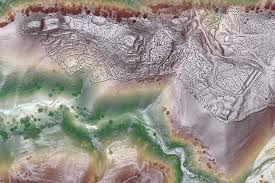Tashkent: Archaeologists have discovered the remains of two medieval cities in the southeastern mountains of Uzbekistan, located above the ancient Silk Trade Road.
The discovery, made using drone-based lidar technology, reveals previously unknown details about urban life at high altitudes in Central Asia, National Geographic reported.
The research team, led by National Geographic explorer Michael Frashetti and Farhod Maksudov, director of the National Archaeological Center of Uzbekistan, identified the cities of Tugunbulak and Tashbulak at elevations of up to 7,200 feet. The larger Togonbulak site spans approximately 300 acres, making it one of the largest known settlements in the region from this period, according to a study published in the journal Nature.
“LiDAR showed us that there was a huge city, hiding in plain sight,” said Fraschetti, an associate professor of anthropology at Washington University in St. Louis. High-resolution images reveal extensive city walls, fortifications, watchtowers and a central citadel with thick walls of stone and mudbrick.
About three miles away, the smaller, densely packed town of Cibulac features multiple permanent buildings and an intricate layout designed to adapt to the steep, mountainous terrain.
The use of lidar technology, which relies on the reflection of light to create detailed 3D maps, has allowed archaeologists to document such sites, which were long thought to be very far from large ancient urban centres.
Both cities flourished between the 6th and 11th centuries, and the site of Togonbulak suggests that they may have served as a major production center for iron tools and weapons, supported by the strong winds of the region.
The discovery reshapes ideas of medieval life along the Silk Road, demonstrating that ancient highland societies not only managed to survive in difficult climates, but developed sophisticated urban designs and trade routes linking East and West.
